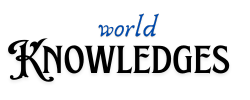
Would you favor the same fashion brand you loved at age 15, a decade on? This is the challenge Urooj Ahmed faced when she joined Alkaram last year as Head of Marketing.
Alkaram needs no introduction among Pakistani consumers, with a legacy spanning decades and a reputation for the finest quality in unstitched.
The brand was able to stay relevant to the late middle-aged shoppers who have grown up shopping from there but was losing salience in shoppers aged 40 and below which contribute to approximately 76% of the population.
The estimated market size for apparel and footwear stands at a staggering 1.8 trillion, with urban areas accounting for 784 billion. As per Alkaram’s independent research, within the branded apparel market, a significant 77% of the target audience falls between the ages of 18 to 39. However, with digital penetration altering consumer preferences and the influx of new brands into the market, the fashion industry has become increasingly competitive. Despite this, the apparel market in Pakistan continues to expand at an annual growth rate of 8%.
To keep up, Alkaram needed to capture the attention of younger consumers while ensuring their loyal buyers didn’t feel alienated.

“In a nutshell, the approach we decided to take was to merge legacy with transformation. The Alkaram brand has a history that goes back four decades. As Pakistani consumers’ lifestyles and preferences evolve, our core focus remains dedicated to adapting and ensuring that all their needs are met under our brand,” shared Urooj while discussing the rebranding process.
“The biggest misconception people have is that rebranding is a marketing effort. However, for us at Alkaram, it meant a total business transformation involving all functions—from design to supply chain—and implementing our new approach across the board” she added.
Following extensive research with Oula and analysis of the local fashion landscape, Alkaram decided to focus on ‘comfort.’
“The common thread we found among all the desires and challenges consumers faced when shopping for fashion in Pakistan was comfort, which emerged as the biggest driver (60%) behind apparel purchases. It’s a seemingly basic yet integral part of fashion choices for all consumers—regardless of gender, socio-economic background, or demographic,” explained Urooj.
She added: “When we delved into the concept of comfort, we discovered it’s more than just how our clothes feel physically—it’s also about how they make our customers feel inside. Through conversations with many consumers, we found that comfort means different things to each person. It’s about the ease of mixing and matching outfits, feeling comfortable at any age, being confident in one’s own skin, and having the freedom to dress however one likes. Whether it’s wanting to be laid-back or stylish, our customers want to feel comfortable in their clothing choices. This led us to rebrand with a fresher and more modern look to resonate better with today’s Generation Z and millennials.”
She further stated: “Once we embraced this approach, we made sure to incorporate it across all aspects of our business. From monthly exclusive capsule collections to offering the same design in multiple styles, our goal is to provide customers with options that prioritize their comfort and flexibility. Whether they prefer a modern or modest look, they can mix and match our designs to suit their taste and occasion. When we spoke to our consumers, we found some very unique perspectives such as working women experience a confidence boost when they dress better especially before important meetings or events, or how women feel they are able to express their individuality through their fashion choices.
Additionally, we’ve enhanced our in-store experience and refined our e-commerce platform for smoother browsing. With 70% of the market still preferring unstitched garments, we’ve transformed our unstitched segment by introducing industry-first two-way inlays suggesting 2 ways of stitching the same fabric. From reversible jackets for maximum utility to enhancing our internal employee experience, comfort is now central to everything we do.”
Urooj firmly believes this is just the beginning of a gradual journey. In today’s fast-paced world, we cherish the luxury of deliberate decision-making, unlike many new brands pressured by rapid growth. We’re ready to meet the ever-changing demands of the fashion industry.



